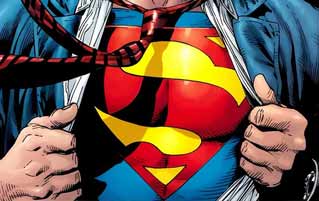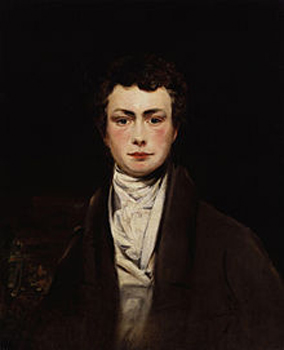4 Vital Pieces Of Pop Culture We Lost Forever

Nowadays, every doodle you scrawl during an interminable staff meeting is preserved for posterity on Instagram, but media used to be both rare and precious. And so, so easily destroyed. There are countless important cultural milestones that have been lost to the annals of history -- and some of them for very stupid reasons ...
Joe Shuster Torched The First Superman Comic
The first Superman comic was published in 1938, but Superman's true origin was five years before that, when writer Jerry Siegel teamed up with artist Joe Shuster for the science fiction story "The Reign Of The Superman." In it, Superman only uses his superpowers for self-gain, but after the story's publication, it occurred to Siegel that the character might catch on if only he weren't such a gargantuan cock. Thus was born The Superman, a revamped hero replete with all the city-saving abilities we know and love, save for one: the ability to wear a shirt.

You spend all that time working out, you want people to see it.
The road to publication was a rough one. It turns out "superpowered social activist in ballet wear" is a tough sell when there's a depression on, and Siegel soon decided that he might have better luck catching a publisher's eye if he were to team up with a more well-known artist. So he flung Shuster aside and pitched the idea to artists like Hal Foster (of Tarzan fame), and Leo O'Mealia (best known for his unique ability to spew concentrated racism from the tip of his pen).
This angered Shuster, who promptly set fire to The Superman, reducing it to a small pile of ashes sitting neatly beneath that cover up there (it alone miraculously survived). Now, obviously, the pair got past their spat and found a way to work together -- in later interviews, they omitted the betrayal altogether and instead credited Shuster's pyromaniac episode to artistic frustration. It's like the old-timey "hysterical woman" excuse, but for creative types.

Could this also have been solved by masturbation?
If the loss of historical art alone isn't enough to coax out a few begrudging tears, consider that a copy of Action Comics No. 1 sold for 3.2 million goddamned dollars back in 2014. Imagine what the prototype version would be worth, if not for that single match ...
The Early Work Of Network TV Icons Was Unceremoniously Dumped In The Ocean
In the pioneer days of television, all shows were broadcast live, there were two channels to choose from, and a carpenter and a TV repairman were the same damned thing.

"No Flash Gordon tonight, son. We have termites."
Did we say two channels? Actually, that wasn't to last. While CBS and NBC ruled the early airwaves, it wasn't long until a third contender came along. No, not ABC -- we're talking about the mostly forgotten DuMont Television Network. Founded in 1946 by TV set maker Allen B. DuMont, the network was home to the immensely popular Captain Video And His Video Rangers (the first-ever sci-fi TV series) and Cavalcade Of Stars, a show most notable for introducing the world to Jackie Gleason and, subsequently, The Honeymooners (thereby kicking off a proud tradition of situational comedy and implied spousal abuse).
Sadly, on the playground of early TV, DuMont was the kid who ate paste. After a decade or so of mismanagement, the network went under. And much like the kid who ate paste, they took their ball when they went home. All of those old recordings were filed away in a warehouse until the 1970s, when an unnamed lawyer -- ostensibly sick and tired of negotiating responsibility for the preservation of DuMont's library -- "took care" of them by loading them onto a bunch of semis, driving them to a barge in New Jersey, and dumping them into New York Bay.

"Did you really need to give them concrete shoes too?"
Who thought you'd come out of this with a new reason to hate lawyers?
Lord Byron's Memoirs Were Too Extreme To Be Allowed Out Of The 19th Century
George Gordon "That's Lord To You" Byron lived the sex, drugs, and rock 'n' roll lifestyle well before one of those things had even been invented. In a day when poetry was the public's poison, Byron leveraged his prose (plus his rock star hair) to embark on a veritable world tour ... only instead of cities, he visited a collection of orifices so vast that it couldn't possibly fit on the back of a T-shirt. Along the way, he recorded his escapades in detail in his memoirs, which he later passed on to fellow poet Thomas Moore. He also left strict instructions for his publisher, John Murray, to only publish them after his death, presumably because he didn't care to be present for the spontaneous combustion of Europe's collective pants.

A man with so much game that that mustache and that outfit did not impede his fuckening.
Having lived at the turn of the 19th century, Byron of course died terribly, and at the ripe old age of thirty-goddamn-six. He'd been leading resistance fighters in the Greek War of Independence against the Ottoman Empire at the time ("poet" used to be synonymous with "tough guy"), and it took a full month for his pickled remains to get back to England. As they did, a small group, including Moore, parliamentarian John Hobhouse, Murray, and Murray's 16-year-old son (heir to the publishing business), gathered in Murray's office to decide the fate of Byron's memoirs. After a series of heated arguments and probably a slap fight or three, the group took the two bound manuscript volumes and, page by page, fed them to a fire.

"Well ... maybe one more read-through. Thomas, light the candles."
We're obviously not sure what Byron wrote in there, but we're betting it put Fifty Shades of Grey to shame. Not like that's difficult.
The Vast Majority Of Hollywood's Silent Films Literally Went Up In Smoke
Quick, name two movie stars of the silent film era!
If you said "Charlie Chaplin and ... um, Fatty ... Beltbuckle? Fats Arbunk? Some fat guy, right?" that's understandable. While the silent era lasted for more than three decades -- from the time Thomas Edison dickishly stole credit for inventing the motion picture camera clear up until "talkies" became the norm - pop culture remembers very little about it. And it's not because we're ignorant philistines; the bulk of all silent films simply went up in flames.
You remember.
We used to store films on ludicrously flammable nitrate stock, and we didn't even think of them as something worth preserving until 1935. So old-timey studio executives went ahead and stuffed endless stacks of nigh-explosive film reels into poorly ventilated vaults (to the right of the bathtub gin, left of the fireworks). Around 70 percent of Hollywood's silent films are plain gone.
Remember that for a good chunk of Hollywood's early history, a film was considered garbage after it had run its course (much like the actors who'd starred in it). The major studios of the era simply recycled old celluloid for its silver content, or else flung film reels in the general direction of the garbage can on their way out the door. Such was the fate of films like Fox's Cleopatra (1917), and Paramount's The Great Gatsby (1926). In fact, Paramount scrapped more than two-thirds of its entire silent film library. Poor Chubby Carbunkle. You never stood a chance.

And yet Monster Trucks and The Love Guru will live on in Paramount's vault for eternity.
Henrik Magnusson also enjoys meaningless pop culture and mean-spirited satire jokes in comic form.
Learn about more items ceremoniously throw to the graveyard of "things we really, really want to see" in The 5 Most Awesome Video Games (They'll Never Let You Play) and 6 Objects You Won't Believe People Managed to Lose.
Subscribe to our YouTube channel, and check out Why 'Keep Calm And Carry On' Is A Lie, and other videos you won't see on the site!
Follow us on Facebook, and we'll follow you everywhere.